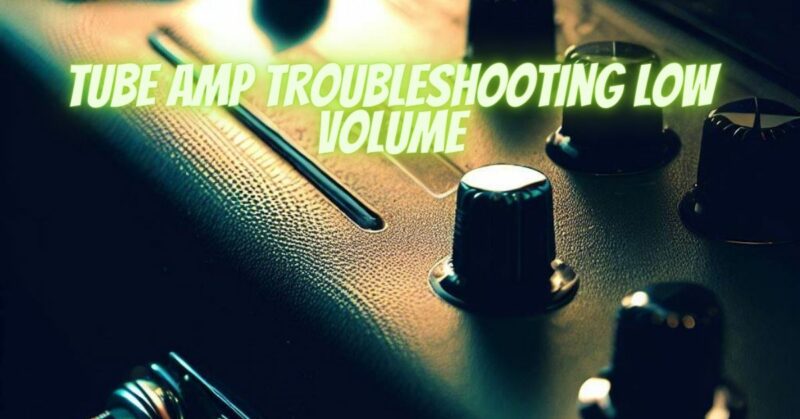Tube amps are revered for their warm and rich sound, but encountering low volume issues can be frustrating for guitarists. If your tube amp is producing lower-than-expected volume levels, there may be underlying factors contributing to the problem. In this article, we will guide you through a series of troubleshooting steps to help diagnose and address low volume issues in your tube amp, ensuring you can restore its sonic glory.
- Check Guitar and Cable:
Before diving into the internals of your amp, begin by ruling out external factors. Test your guitar and cable on a different amp to ensure they are functioning properly. Faulty cables or weak output from the guitar itself can contribute to low volume levels.
- Verify Tube Health:
Tubes are crucial components in tube amps, and their condition can impact the volume output. Check if any tubes appear visually damaged or worn. Additionally, try swapping tubes one by one with known-good tubes to identify if a particular tube is causing the low volume issue. Keep in mind that working with tubes requires caution and expertise, so if you are unfamiliar, seek assistance from a qualified technician.
- Inspect Speaker Connections:
Ensure that the speaker cables are securely connected to the amp’s speaker output and the speaker itself. Loose or faulty connections can result in reduced volume or even no sound at all. Also, inspect the speaker cone for any visible damage that may affect its performance.
- Clean Potentiometers and Jacks:
Over time, dust and debris can accumulate in the potentiometers (volume and tone controls) and jacks, causing intermittent connections and reduced volume. Use an electronic contact cleaner to carefully clean these components. Rotate the potentiometers and insert/remove cables in the jacks multiple times to help eliminate any oxidation or debris.
- Check Bias and Power Supply:
Improperly biased tubes or issues with the power supply can contribute to low volume. However, biasing and power supply adjustments require technical knowledge, and it is recommended to seek professional assistance to ensure safe and accurate adjustments.
- Test Different Inputs and Gain Settings:
Experiment with different inputs and gain settings on your amp to ensure you are using the appropriate combination for the desired volume. Some inputs may be inherently lower in volume, while higher gain settings can introduce distortion that masks the perceived volume.
- Consult an Amp Technician:
If the troubleshooting steps mentioned above do not resolve the low volume issue, it may be necessary to consult an experienced amp technician. They have the expertise and equipment to diagnose and repair more complex problems that may be affecting your tube amp’s volume output.
Conclusion:
Low volume issues in tube amps can be disheartening, but with proper troubleshooting, many of these issues can be resolved. By systematically checking external factors, verifying tube health, inspecting speaker connections, cleaning potentiometers and jacks, and testing different inputs and gain settings, you can narrow down the potential causes of low volume. However, it’s crucial to exercise caution and seek professional assistance if you are uncertain about handling internal components or if the issue persists. With a little persistence and the right guidance, you can restore your tube amp’s volume and once again enjoy the full sonic potential it has to offer.

